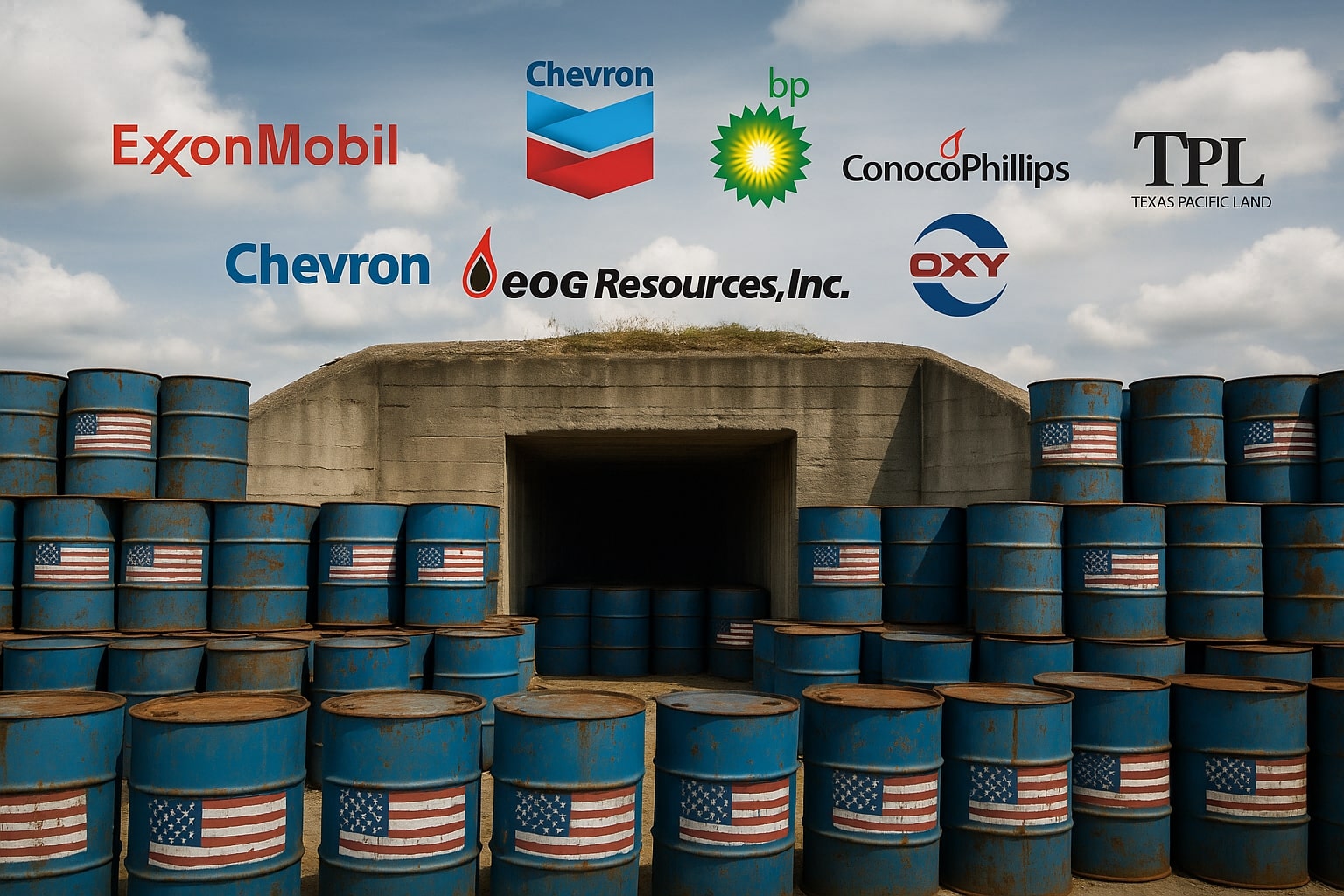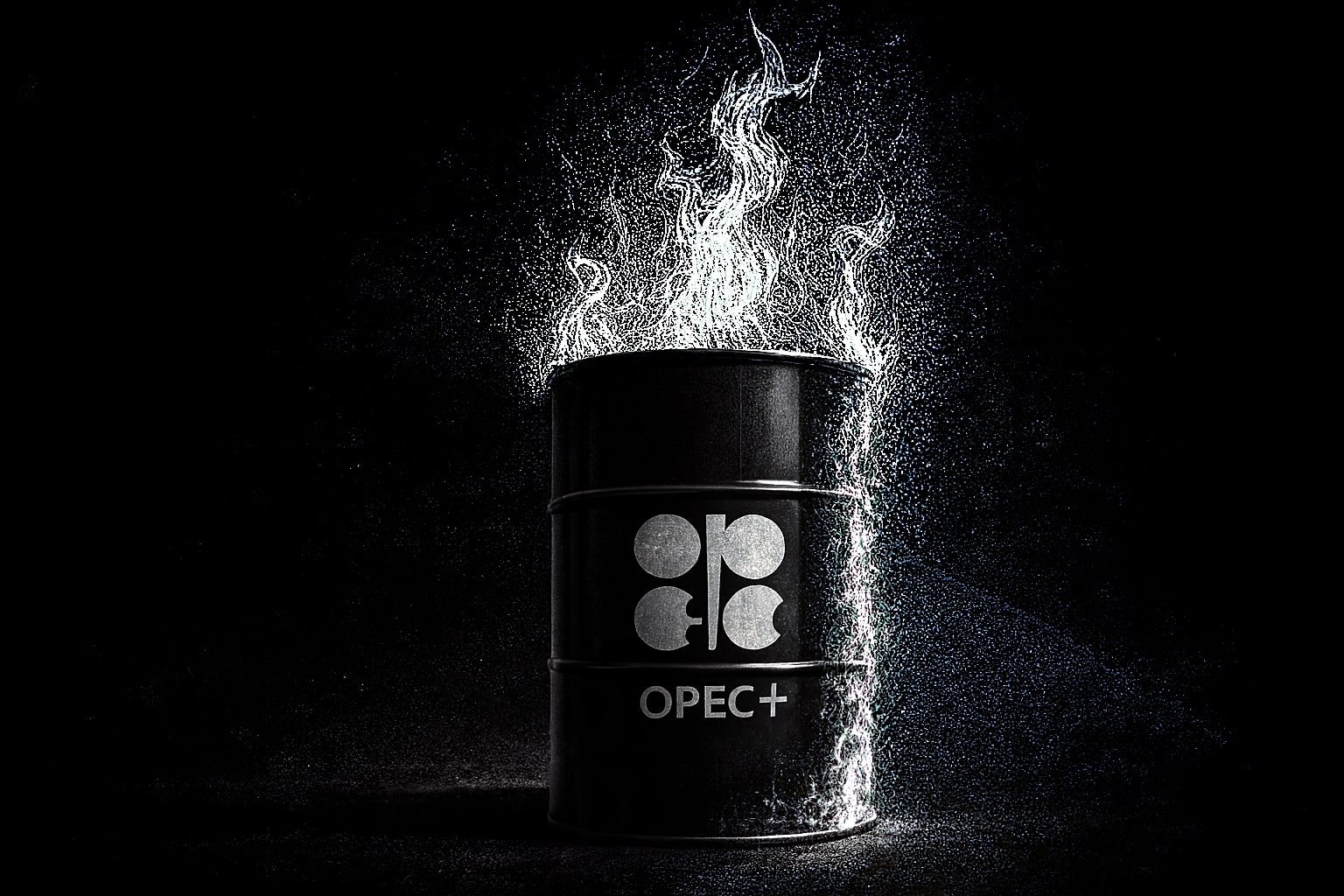
U.S. Crude Inventories Shock Market with 3.76 Million-Barrel Build—Why Are Oil Prices Sliding?
Brent crude slipped to $64.08 and WTI dropped to $60.24 after the API reported a far larger than expected stockpile increase—will OPEC+ production cuts or Trump’s tariff truce reverse the slide? | That's TradingNEWS
Inventories Jump as Markets Brace for Oversupply
The American Petroleum Institute’s estimate that U.S. crude stocks climbed by 3.76 million barrels in the week ending April 25 caught traders off guard, dwarfing consensus forecasts for a mere 390,000-barrel build. This rebound follows the previous week’s 4.565 million-barrel draw, leaving total crude supplies up by over 23 million barrels year-to-date. Meanwhile, Strategic Petroleum Reserve holdings climbed by another 1 million barrels to 398.5 million, still massively below pre-government sale levels. At Cushing, Oklahoma—the delivery point for NYMEX WTI contracts—stocks rose by 674,000 barrels, reversing the prior week’s modest withdrawal.
Benchmark Prices Slip to Multi-Week Lows
Late-day trading saw Brent futures (BZ=F) slumping $1.78, or 2.7 percent, to $64.08 per barrel—a $3 weekly loss—while WTI slid $1.81 to $60.24, wiping out roughly $4 since last Friday’s close. Both benchmarks marked their weakest settlements since April 10. Summer gasoline demand indicators offered little relief: national stocks fell by 3.14 million barrels, now 3 percent below the five-year seasonal average, and distillate inventories dropped 2.52 million, deepening a 13 percent shortfall versus typical levels at this time of year.
OPEC+ Output Plans Add to Bearish Backdrop
As traders accounted for potential production increases from OPEC+ in June, oil prices faced additional pressure. Despite a recent pledge by some members to modestly unwind cuts, Kazakhstan showed little interest in further curtailments, boosting its exports by 7 percent year-over-year through Q1 via Caspian pipelines. Saxo Bank’s Ole Hansen warns that raising output “could not happen at a worse time,” given the market’s frail sentiment and looming global demand concerns.
Trade War Uncertainty Amplifies Demand Fears
President Trump’s tariff strategy looms large over the energy complex. With economists warning that aggressive duties on imports may tip the global economy into recession, crude’s outlook darkened. Treasury Secretary Scott Bessent’s lack of clarity on China negotiations only fanned the flames, while a Reuters poll showed the U.S. goods deficit hitting record highs as companies stocked up ahead of tariff deadlines. Anecdotal evidence from major shippers—UPS slashing 20,000 jobs and General Motors pulling its guidance—underlines the real-world impact on fuel demand.
Technical Breakdown Signals Further Weakness
After failing to recapture its 20-day moving average near $63, crude created a small ascending consolidation that collapsed on Tuesday’s session, breaking through support around $61.83. A bearish engulfing candle topped out at $65.32, coinciding with a test of long-term horizontal resistance. The next technical support resides near the 50 percent retracement at $60.40, followed by the 61.8 percent level at $59.08 and the prior low at $58.86. On the upside, any relief rally would encounter stiff obstacles at the former channel base around $62.22 and the descending 20-day line.
Corporate Ripples: Major Upstream and Downstream Moves
Oil majors are feeling the squeeze. ExxonMobil (XOM) and Chevron (CVX) earnings loom this week as market watchers gauge how integrated producers will weather weaker realizations. BP (BP.US) recently reported net income plunging 48 percent to $1.4 billion, prompting its strategy chief to depart. Shell (SHEL.L) is offloading its Colonial pipeline stake for $1.45 billion, while EQT (EQT.US) snaps up Olympus Energy assets to boost gas volumes—a sign that some producers are shifting focus to cleaner fuels amid crude’s volatility.
Geopolitical Drivers and Alternative Energies
Beyond tariffs, Middle East shipping remains a flashpoint. U.S. sanctions on vessels supplying Yemen’s Houthis and talks to revive the Kirkuk-Baniyas pipeline in Syria highlight supply-side risks. Meanwhile, Canada’s pivot toward LNG exports, propelled by the LNG Canada project and rising drilling permits in Alberta’s Montney, signals North America’s growing role in global gas markets. Corn ethanol policy tweaks in the U.S. Midwest add another layer of complexity to refining margins.
Positioning and Recommendation
With inventories surging well beyond expectations, WTI and BZ=F failing key technical thresholds, and demand worries amplified by trade tensions, the outlook remains skewed toward lower highs and retests of support near $60. A disciplined trader would treat rallies below the 20-day moving average as selling opportunities, placing protective stops above $62.50. For those seeking a tactical stance, short-term positions targeting $60.40 and then $59.08 could capture the next leg of the downturn. Given the absence of convincing bullish catalysts and the weight of data pointing to oversupply, maintaining a bearish posture—sell on rallies—is the prudent call until evidence emerges that OPEC+ is willing and able to offset these daunting stock builds.
That's TradingNEWS
Read More
-
SMH ETF: NASDAQ:SMH Hovering at $350 With AI, NVDA and CHIPS Act Fueling the Next Move
16.12.2025 · TradingNEWS ArchiveStocks
-
XRP ETFs XRPI and XRPR: Can $1B Inflows Lift XRP-USD From $1.93 Back Toward $3.66?
16.12.2025 · TradingNEWS ArchiveCrypto
-
Natural Gas Price Forecast: NG=F Falls to $3.80–$3.94 as Warm Winter Kills $5.50 Spike
16.12.2025 · TradingNEWS ArchiveCommodities
-
USD/JPY Price Forecast - USDJPY=X Slides, BoJ 0.50% Hike, Fed Cut and NFP Set the Next Big Move
16.12.2025 · TradingNEWS ArchiveForex



















